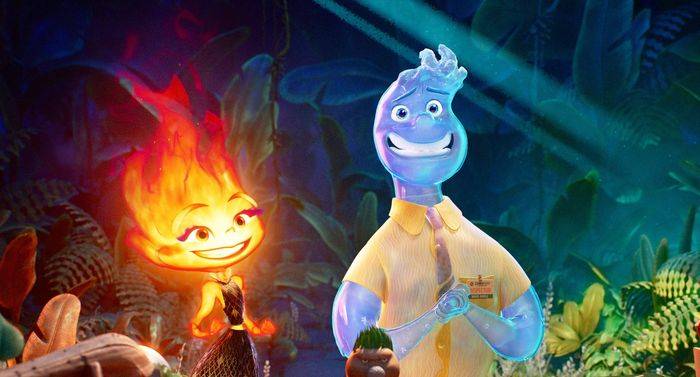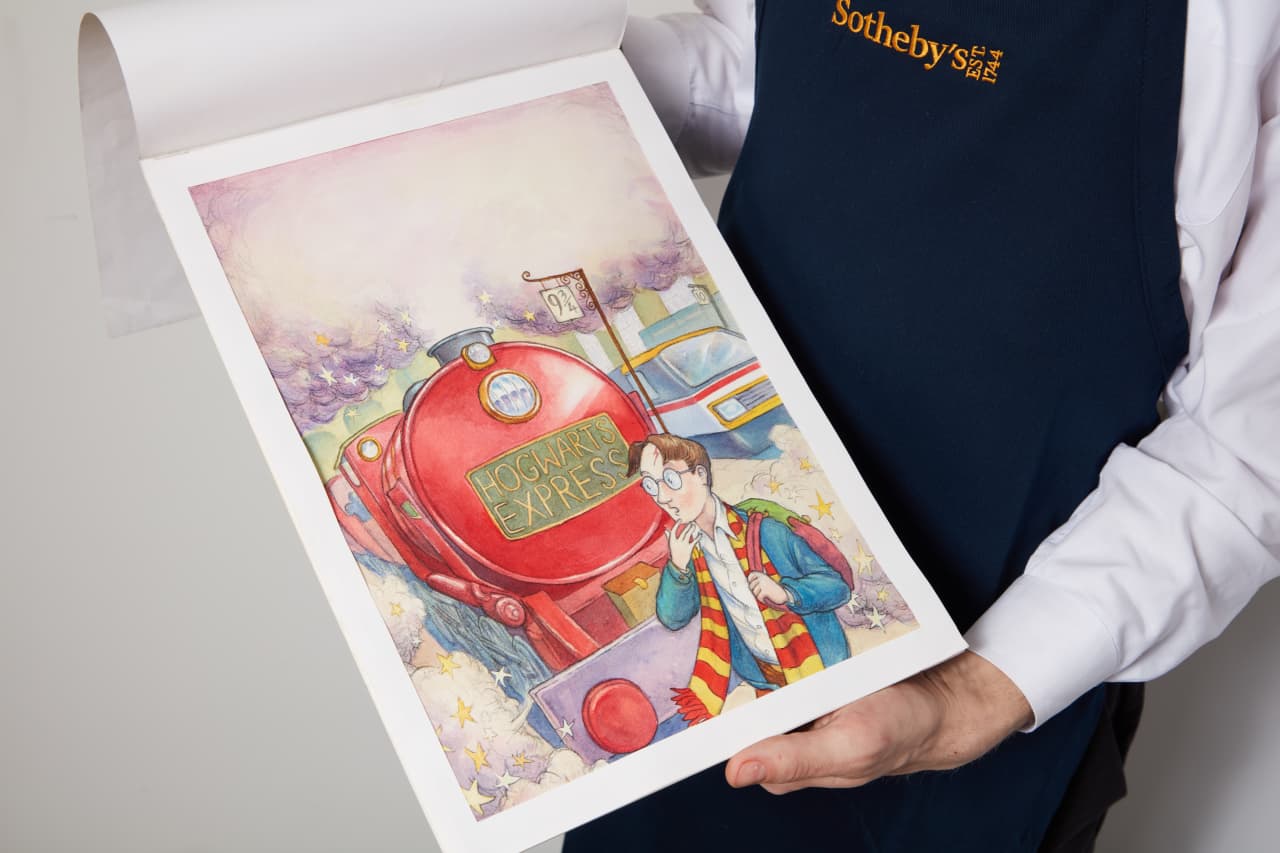Iger Lays Out Vision for Disney’s Future
CEO says streaming, parks, studios and ESPN are the building blocks of the company
Nearly a year after returning to Disney as chief executive, Bob Iger laid out his vision of the company’s future, putting streaming and live entertainment at the centre, fed by a studio business that he plans to personally help reinvent.
Iger told investors in a fourth-quarter earnings call that Disney will focus on four “building blocks” that provide the foundation for future growth: streaming, theme parks and cruises, studios and the ESPN sports network.
Disney said Wednesday it would slash $2 billion more in costs than previously planned as the company sharply narrowed losses in its streaming business.
There are still major challenges to overcome. Disney’s streaming business has lost nearly $11 billion since the launch of Disney+ in late 2019. Its movie studio is in the midst of a box-office slump that has been exacerbated by delays caused by Hollywood strikes, and ESPN is looking for strategic partners as it plans to eventually transform into a streaming-only business by 2025.
“A lot of time and effort was spent on fixing in the last year,” Iger said during a conference call Wednesday. The company’s progress means Disney can “move beyond this period of fixing and begin building our businesses again,” he said.
Iger said the studio would focus more on quality than quantity and that it lost some of its focus during and after the pandemic. “We’re all rolling up our sleeves, including myself, to do just that,” he said.
Some of Disney’s core franchises, including its Marvel superhero movies and series, have struggled to attract big audiences to theaters in recent years.
Lucasfilm, the Disney-owned studio behind the lucrative and popular “Star Wars” movies, hasn’t released a feature film since 2019 and doesn’t have one in production currently, meaning it will likely be several years before the next one comes out. And Pixar, the marquee computer animation studio that has dominated the box office for the last several decades, has had a series of box-office flops.
The common thread underlying Disney’s recent challenges and potential opportunities is the transition from traditional media like film and legacy TV to streaming, which has upended Hollywood’s business model and roiled nearly every entertainment company.
In his comments Wednesday, Iger stressed the importance of getting streaming right. The company’s main streaming service, Disney+, added 6.9 million “core” subscribers—those in North America and other markets such as Europe and Asia, excluding India, where it is able to charge higher subscription prices—in the most recent quarter, about twice what Wall Street analysts polled by FactSet predicted. Disney+ added 500,000 domestic subscribers.
The company highlighted the popularity on Disney+ of recent movies including “Elemental,” the Marvel superhero film “Guardians of the Galaxy Vol. 3” and the recent live-action remake of “The Little Mermaid.”
“One thing that we have recently really come to appreciate is the performance of our big title films,” Iger said. The strength of its films on streaming means Disney can spend less on TV series, which is a differentiator for the company, Iger said.
The entertainment giant said Wednesday it is seeking $7.5 billion in cost cuts, up from the $5.5 billion it targeted at the beginning of this year.
Disney reported that its streaming business is making progress in narrowing its losses. The business, which also includes Hulu and ESPN+, lost $387 million in the most recent quarter, down from $1.47 billion a year earlier. The company reiterated that it believes streaming will break even by next September.
Disney has begun reporting more detailed results from its ESPN sports network as it seeks strategic partners to invest in the flagship sports network’s future.
ESPN’s operating income for fiscal 2023 fell 1.7% to $2.8 billion, while revenue rose 2% to $16.4 billion. Disney owns 80% of ESPN through a joint venture with Hearst, and Iger has said the company is working to transform the network into a fully direct-to-consumer platform, with live sports and other sports content streamed to consumers outside the cable bundle.
Excluding ESPN, Disney’s traditional TV networks saw revenue fall 9.1% for the quarter to $2.62 billion. Operating income from the networks was flat at $805 million.
During a CNBC interview Wednesday, Iger said the company has been considering strategic options for each of its TV networks, though “not necessarily all of them,” and has been reviewing its TV operations for opportunities to reduce costs and improve the business. This past summer, he said the legacy networks may not be core to Disney, suggesting it could sell them.
Other bright spots in Wednesday’s quarterly earnings included Disney’s experiences segment, which includes theme parks, cruise ships, a family-adventure travel-guide business and merchandise licensing. The unit’s operating income rose 31% from the year-earlier quarter to $1.76 billion. Disney has raised prices at its theme parks and announced major investments in its cruise ship business in the hopes of capitalising on rising demand for in-person entertainment experiences.
The entertainment giant, which just passed its 100th birthday, generated sales of $21.2 billion for the quarter, up 5% from a year earlier. Revenue for the period was slightly below the $21.4 billion predicted by analysts polled by FactSet.
Disney’s net income rose to $264 million in the September quarter, from $162 million a year earlier. Disney’s earnings per share, excluding certain items, were 82 cents, beating Wall Street’s projections by 11 cents.
Disney shares rose nearly 3% in after-hours trading. Before the earnings report, the stock had fallen 2.7% in 2023.
Overall, Disney+ ended the quarter with 150.2 million global subscribers, including those signed up to its Hotstar service in India. That service has shed millions of customers over the last year after Disney lost a bidding war for the rights to stream matches from a popular cricket league, and Disney is exploring a sale of its India unit, The Journal has reported.
Although the company fended off an activist campaign by Nelson Peltz earlier this year, Iger now faces the specter of another battle.
The Wall Street Journal reported in October that Peltz’s Trian Fund Management is planning a fresh push for board seats. Billionaire and former Marvel executive Isaac “Ike” Perlmutter has said he has entrusted his stake in Disney to Trian for that effort, giving the investment fund control over a stake worth upward of $2.5 billion.
Iger said in the CNBC interview that he had spoken recently with Peltz but he doesn’t “know what Nelson is really after.”
 Copyright 2020, Dow Jones & Company, Inc. All Rights Reserved Worldwide. LEARN MORE
Copyright 2020, Dow Jones & Company, Inc. All Rights Reserved Worldwide. LEARN MORE
This stylish family home combines a classic palette and finishes with a flexible floorplan
Just 55 minutes from Sydney, make this your creative getaway located in the majestic Hawkesbury region.
Continued stagflation and cost of living pressures are causing couples to think twice about starting a family, new data has revealed, with long term impacts expected
Australia is in the midst of a ‘baby recession’ with preliminary estimates showing the number of births in 2023 fell by more than four percent to the lowest level since 2006, according to KPMG. The consultancy firm says this reflects the impact of cost-of-living pressures on the feasibility of younger Australians starting a family.
KPMG estimates that 289,100 babies were born in 2023. This compares to 300,684 babies in 2022 and 309,996 in 2021, according to the Australian Bureau of Statistics (ABS). KPMG urban economist Terry Rawnsley said weak economic growth often leads to a reduced number of births. In 2023, ABS data shows gross domestic product (GDP) fell to 1.5 percent. Despite the population growing by 2.5 percent in 2023, GDP on a per capita basis went into negative territory, down one percent over the 12 months.
“Birth rates provide insight into long-term population growth as well as the current confidence of Australian families,” said Mr Rawnsley. “We haven’t seen such a sharp drop in births in Australia since the period of economic stagflation in the 1970s, which coincided with the initial widespread adoption of the contraceptive pill.”
Mr Rawnsley said many Australian couples delayed starting a family while the pandemic played out in 2020. The number of births fell from 305,832 in 2019 to 294,369 in 2020. Then in 2021, strong employment and vast amounts of stimulus money, along with high household savings due to lockdowns, gave couples better financial means to have a baby. This led to a rebound in births.
However, the re-opening of the global economy in 2022 led to soaring inflation. By the start of 2023, the Australian consumer price index (CPI) had risen to its highest level since 1990 at 7.8 percent per annum. By that stage, the Reserve Bank had already commenced an aggressive rate-hiking strategy to fight inflation and had raised the cash rate every month between May and December 2022.
Five more rate hikes during 2023 put further pressure on couples with mortgages and put the brakes on family formation. “This combination of the pandemic and rapid economic changes explains the spike and subsequent sharp decline in birth rates we have observed over the past four years,” Mr Rawnsley said.
The impact of high costs of living on couples’ decision to have a baby is highlighted in births data for the capital cities. KPMG estimates there were 60,860 births in Sydney in 2023, down 8.6 percent from 2019. There were 56,270 births in Melbourne, down 7.3 percent. In Perth, there were 25,020 births, down 6 percent, while in Brisbane there were 30,250 births, down 4.3 percent. Canberra was the only capital city where there was no fall in the number of births in 2023 compared to 2019.
“CPI growth in Canberra has been slightly subdued compared to that in other major cities, and the economic outlook has remained strong,” Mr Rawnsley said. “This means families have not been hurting as much as those in other capital cities, and in turn, we’ve seen a stabilisation of births in the ACT.”
This stylish family home combines a classic palette and finishes with a flexible floorplan
Just 55 minutes from Sydney, make this your creative getaway located in the majestic Hawkesbury region.






















